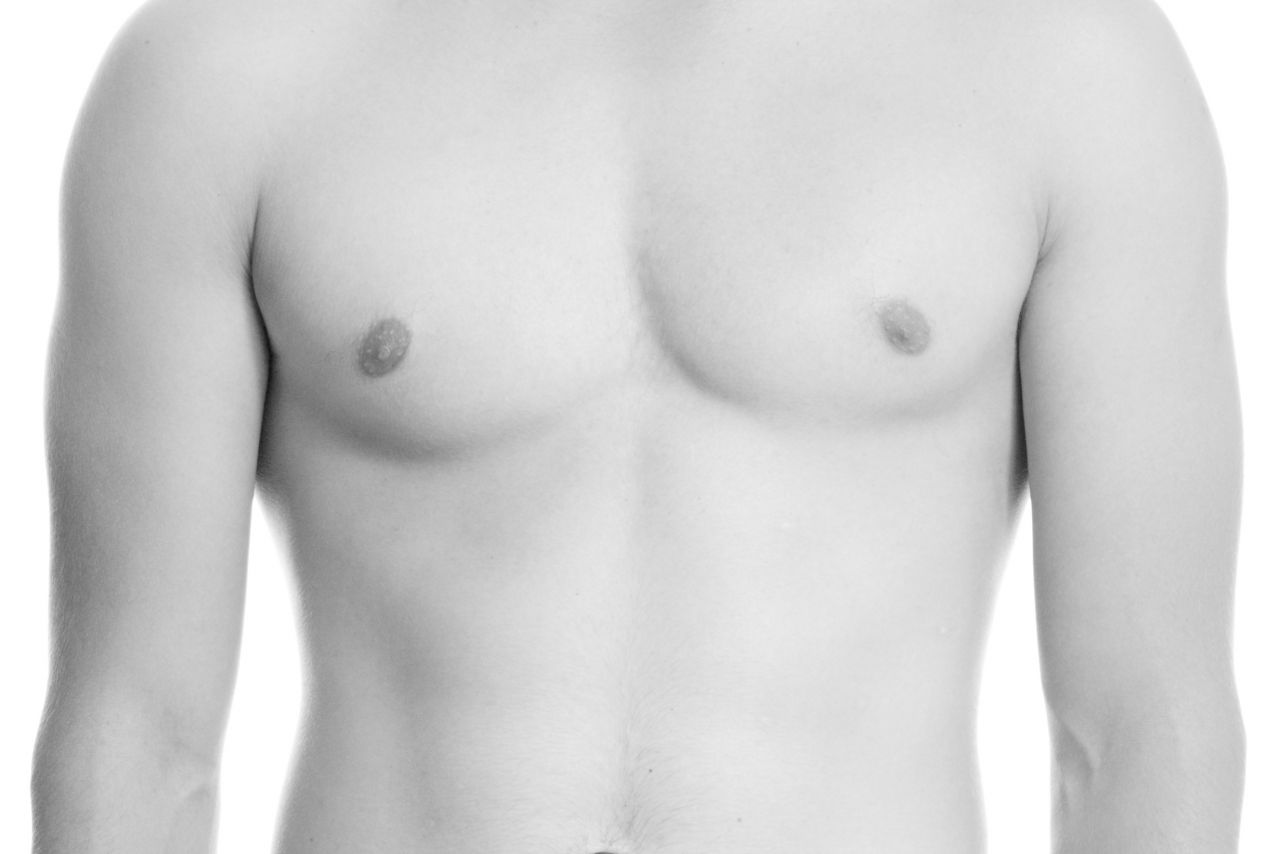


Male Chest Reduction
Frequenty Asked Questions
What causes gynaecomastia?
Establishing a cause for gynaecomastia is essential in deciding on the treatment plan. Unfortunately, in many cases of gynaecomastia, a cause is not easy to determine.
The vast majority of cases there is no definite cause. This is known as idiopathic gynecomastia and it is generally down to the pattern of fat distribution in individuals. Idiopathic gynaecomastia often runs in families, with fathers and sons having similar patterns of fat distribution in the chest area. It is relatively common for males to develop prominent breasts during puberty caused by a hormone imbalance or increased response to the hormone oestrogen. As many as 90% of adolescent males experience this but the problem usually settles down with maturity. In about 10%, however, the condition continues into adulthood as gynaecomastia. The condition is also common in men over the age of 40.
Gynaecomastia can be a symptom of other underlying health condition or rarely more serious syndromes including:
- Weight gain
- Excessive alcohol consumption
- Marijuana use
- Steroid use
- Hyperthyroidism
- Hypogonadism
- Kidney or liver disease
- Male breast cancer
- Medication side effects from hormone treatments, chemotherapy, radiation therapy and certain medications
- Tumours of androgen-producing glands
- Syndromes such as Klinefelter’s Syndrome
These causes account for about 10% of cases and it is important to rule them out.
Is gynaecomastia surgery suitable for me?
For most teenagers, gynaecomastia goes away as your hormone levels naturally get into balance. However, in some men, the condition is permanent. If there is an underlying cause, your general practitioner will aim to treat this first.
There are various reasons why men of all ages and physical builds seek a surgical correction. Some common factors which influence their decision include:
- Embarrassment, often when changing in public places
- Problems with sexual relationships
- Displeasure with physical appearance and outline in clothing
- Emotional conflict over sexual identity
Mr Sawyer will carry out a detailed assessment before deciding whether surgery is suitable for you. This will include taking photos for your medical records. He will examine your breasts and ask you questions about your medical history.
If you are planning to lose a lot of weight, it may be better to lose weight before having surgery.
What procedures are available?
Gynaecomastia can be treated by a variety of techniques depending on the type of tissue causing the swelling – fatty or fibrous tissue, the extent of the swelling, and the amount of skin excess.
The techniques employed include:
-
Liposuction
-
Excision of the breast bud (firm disc of glandular tissue behind your nipple)
-
A combination of liposuction and excision of breast bud. This is undertaken as either a day case or with a one night stay post-operatively under local or more commonly general anaesthesia.
-
Very occasionally when there is a lot of skin excess a formal breast reduction is required, with skin excision and nipple/areola repositioning.
-
Areolar and nipple reduction
What are the benefits of surgery?
Your chest should have a more male appearance and both sides should look similar to each other.
Most men who have a successful operation are more comfortable with their appearance and are confident in taking off there shirt for example at the beach.
Your chest should have a more male appearance and both sides should look similar to each other.
Most men who have a successful operation are more comfortable with their appearance and are confident in taking off there shirt for example at the beach.
Are there any alternatives to surgery?
If there is an underlying cause for the gynaecomastia, an its in the early stages, you may be able to take medication to prevent further growth.
If you are overweight and your gynaecomastia is caused mainly by fatty tissue, losing weight may lead to a reduction in the gynaecomastia.
If the condition is fully developed and an underlying cause cannot be identified or treated, surgery is the only way of removing the excess tissue.
What about liposuction for gynaecomastia?
Correction of gynaecomastia using liposuction alone is a relatively straightforward procedure, should produce minimal scars in the chest area. It is low in risk and has a rapid recovery. The effect of liposuction alone will be limited if there is a significant fibrous component to the breast or if there is significant skin excess.
Liposuction only removes the fatty element of breast tissue and does not remove the breast gland tissue. If the breast gland tissue is the principle cause of gynecomastia this will not be removed with liposuction and some gynecomastia can remain. Hence liposuction maybe combined with breast bud excision.
Enlargement of the male breast tissue tends to stretch the skin. Liposuction techniques remove the fatty elements within the breast and rely on natural skin contraction to tighten the skin. Skin tightening only occurs to a limited extent and tends to occur more in younger people. Therefore, liposuction only deals with relatively modest amounts of skin excess.
What about breast bud excision?
When the breast tissue is fibrous (usually behind the areola) it may be necessary to directly excise the tissue through a semi-circular incision below the brown area of the nipple where it meets your normal coloured skin.
In most cases liposuction is undertaken at the same time. The wound is repaired with a dissolving stitch and the scar is normally very inconspicuous, being at the junction of pigmented and non-pigmented skin. A drain is sometimes inserted and is removed prior to discharge.
What about a formal breast reduction?
In severe cases of gynaecomastia when there is a marked skin excess a formal breast reduction is required. In this procedure skin is excised and in most cases the nipple areola complex is moved upwards into a more normal position. There will inevitably be scars of the chest though their precise location will vary on the type of reduction required. In almost all cases drains are required and the hospital stay will be between 1 and 2 nights. This is rarely required as in most cases the alternative procedures work well.
What about areola and nipple reduction?
When the areola is excessively large it can be reduced by excising a ring of tissue around it. The effect of this procedure may however be limited as the scar may stretch and in some instances the areola may stretch out again. Also this technique is not suitable when the breast bud is being excised, but can be combined with liposuction alone. When the nipples are excessively pointy or large a reduction can be performed. This is usually a straightforward procedure.
Price Range
£5300-6800
Putting the most important person in someone else's hands who you've only met a few times is a very hard choice to come to terms with but every step of the way Mr Sawyer has been excellent in every way.

Contact us to schedule in your appointment
Ask Us A Question
Hi! Click here to start a chat with Becky & Claire on WhatsApp.
It's out of office hours, we'll try and respond as soon as we can.
Ask us a question